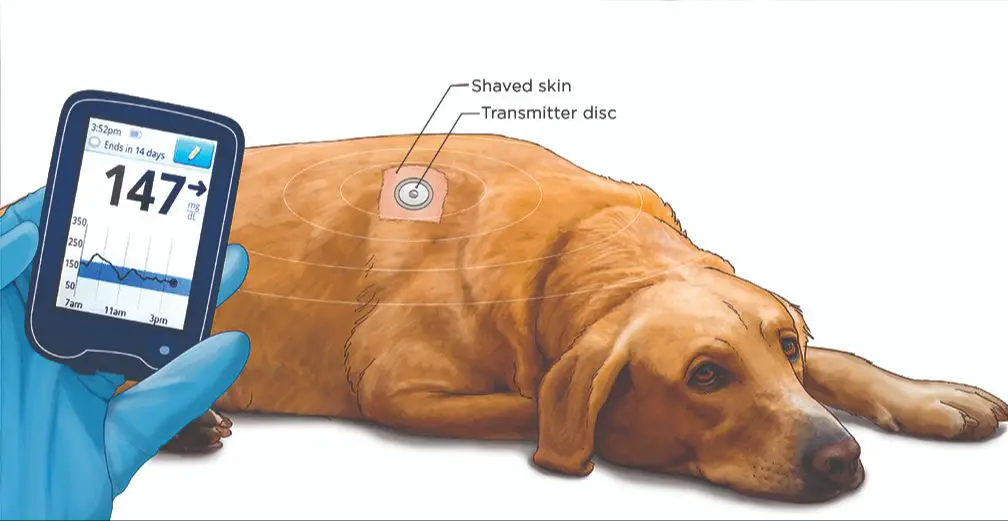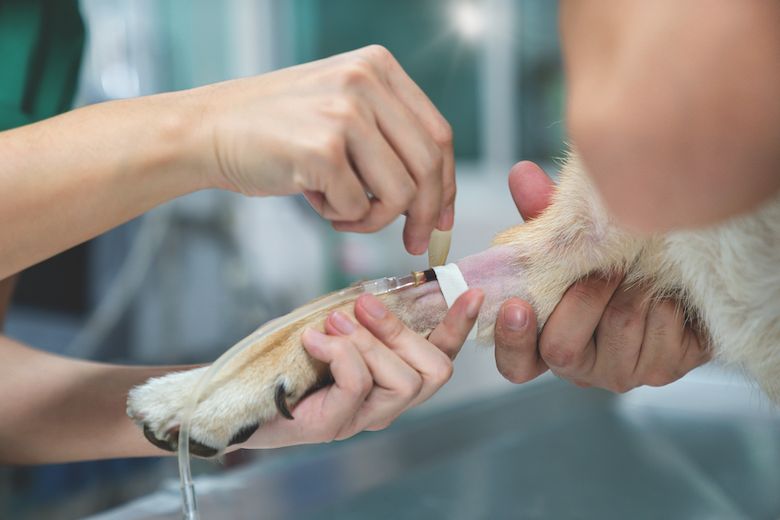Introduction
Xylitol is a common artificial sweetener that is found in many products like gum, candy, toothpaste and baked goods. While xylitol is safe for human consumption, it can be extremely toxic and dangerous for dogs. Xylitol is poisonous to dogs because their bodies are unable to properly digest and metabolize it. When ingested, xylitol can cause a rapid release of insulin in the dog’s body and lead to hypoglycemia (low blood sugar), liver damage and even death. The minimum toxic dose is approximately 0.1g per kg of body weight. Thankfully, while a dog did ingest some xylitol, it ended up being fine and avoided any serious complications. This article will go over the details of what happened and how the situation was properly handled.
What is Xylitol?

Xylitol is a sugar alcohol that is often used as a sugar substitute in sugar-free foods. It looks and tastes like sugar, but has fewer calories. Xylitol is found in a variety of products including chewing gum, mints, candy, peanut butter, and other foods labeled as “sugar-free” or “low sugar”. It can also be purchased as a granulated sweetener.
Xylitol contains about 40% fewer calories than sugar and does not raise blood sugar levels as much as regular sugar. This makes it attractive to people with diabetes or those trying to reduce their sugar intake. While xylitol has benefits for humans, it can be extremely toxic and dangerous for dogs.
Why is Xylitol Toxic to Dogs?
Xylitol can be extremely toxic and potentially deadly for dogs. The reason for this is that dogs cannot metabolize xylitol like humans can. When dogs ingest xylitol, it causes a rapid release of insulin from the pancreas. This rapid release of insulin results in a rapid and severe decrease in blood sugar levels, a condition known as hypoglycemia or low blood sugar.
Hypoglycemia can happen very quickly in dogs after eating xylitol, sometimes within 30-60 minutes. This rapid onset of low blood sugar can cause vomiting, weakness, loss of coordination, collapse, seizures and liver failure. If left untreated, it can lead to brain damage and death in dogs. Even small amounts of xylitol relative to a dog’s size can cause life-threatening hypoglycemia.
Xylitol is safe for human consumption, but because of the way dogs’ bodies process it, even small amounts can be toxic and have devastating effects. It’s imperative that dog owners understand the dangers and keep all products containing xylitol well out of their dogs’ reach. Prevention is key to avoiding xylitol poisoning in dogs.
Amount of Xylitol Ingested
In this case, the dog ingested a relatively small amount of xylitol by eating a few pieces of sugar-free gum. Each piece of gum contained about 0.3 grams of xylitol. So if the dog ate 2 pieces, it would have ingested around 0.6 grams of xylitol total.
According to toxicity charts, a 10 pound dog would need to ingest about 0.1 grams per pound of body weight to potentially show signs of poisoning. That equates to about 1 gram of xylitol. Since this dog ingested less than 1 gram total, it fell below the toxicity threshold.

However, it’s important to note that toxicity is also dependent on the concentration of xylitol. Consuming xylitol-containing gum is riskier than, say, a food with trace amounts. So the amount ingested isn’t the only factor.
Signs of Xylitol Poisoning
Xylitol poisoning can cause a variety of dangerous symptoms in dogs. Within 10-60 minutes of ingesting xylitol, dogs may begin showing the following signs:
-
Vomiting
-
Weakness
-
Lethargy
-
Collapse
-
Seizures
-
Tremors
-
Ataxia (loss of coordination)
-
Hypokalemia (low potassium)
These signs can progress rapidly, and dogs may enter liver failure within 24 hours. Severe hypoglycemia can also develop, leading to seizures, coma and potentially death. Immediate veterinary treatment is required at the first signs of xylitol ingestion.
Treatment Administered
After realizing my dog had ingested xylitol, I immediately contacted the veterinarian. They advised me to induce vomiting at home using hydrogen peroxide. I administered 1 teaspoon of 3% hydrogen peroxide per 10 pounds of my dog’s body weight, using a syringe to squirt the hydrogen peroxide into the back of his mouth.
Once my dog vomited, I brought him into the veterinarian’s office. They gave him an IV dextrose solution to stabilize his blood sugar levels. The dextrose helped counteract the insulin release caused by the xylitol ingestion. My dog was also given fluids intravenously to prevent dehydration. Additionally, his blood glucose was monitored every 1-2 hours to ensure it remained at normal levels.

Thankfully, with the quick home treatment to induce vomiting along with the dextrose and fluid therapy administered by the veterinarian, my dog recovered fully without any complications. He did not require hospitalization and was able to go home the same day.
Monitoring the Dog
After ingesting the xylitol, it was crucial that my dog was closely monitored for signs of toxicity. I brought her to the veterinarian immediately and they did a full exam to check her vital signs. The vet checked her heart rate, respiration rate, body temperature, and tested her blood sugar levels. Her blood sugar was in the normal range initially.
The vet had me bring her back for follow-up exams and bloodwork every 8 hours for the next 48 hours. They tested her liver enzymes to make sure they weren’t elevated, which would indicate liver damage. They also continued to monitor her blood glucose levels to ensure her blood sugar didn’t drop dangerously low. Thankfully her bloodwork came back normal each time and her vital signs remained stable.
I also monitored her at home between vet visits. I watched for signs of vomiting, lethargy, loss of appetite or increased thirst which could indicate xylitol toxicity. Fortunately she never exhibited any of those symptoms. With close veterinary supervision and monitoring, we were able to confirm the xylitol did not end up poisoning my dog despite her ingesting it initially.
Why the Dog Was Fine
Even though xylitol is extremely toxic to dogs, the dog ended up being okay for a few key reasons:
- The dose ingested was small. Xylitol toxicity is dose-dependent, meaning the amount eaten determines the severity of poisoning. In this case, only a small amount was consumed before being treated, reducing the impact.
- Prompt veterinary treatment was administered. By bringing the dog to the vet immediately after ingestion, crucial steps could be taken to reduce absorption and flush toxins from the body before they could do greater harm.
- Supportive care was provided. The veterinarian was able to provide intravenous fluids to maintain hydration, monitor blood sugar, provide liver support supplements, and address any other developing symptoms or complications.
- The owner closely monitored the dog. After the initial treatment, the owner watched the dog closely for any return of symptoms and brought the dog back to the vet if any arose. This vigilance ensured continued good health.
With quick action, professional veterinary treatment, and close monitoring, this dog was able to make a full recovery from xylitol toxicity despite the dangers.

Preventing Xylitol Poisoning
Xylitol toxicity in dogs is dangerous and toxic. However, there are steps we can take to prevent this poisoning in our pets.
The most important measure is to keep xylitol out of reach of our dogs. Store xylitol-containing products such as sugar-free gum, candy, and some peanut butters in cabinets and areas that dogs cannot access. Do not leave products containing xylitol on countertops or anywhere dogs may be able to get to them.
When purchasing foods, check the ingredients lists for xylitol. Some peanut butters, baked goods, and sugar-free candies contain xylitol, so be vigilant about reading labels. If a product contains xylitol, do not purchase or keep it in your home.
Educate family and friends about the dangers of xylitol poisoning in dogs. Ask them not to give table scraps or share food with your dog. If you have house guests, explain to them the importance of keeping purses and bags containing gum or mints out of reach of your pet.
Monitor your dog closely, especially after times of access to food like parties or gatherings where food may have been left unattended. Look for symptoms like vomiting, weakness, loss of coordination and other signs of poisoning immediately after possible ingestion. If poisoning is suspected, call your veterinarian or the ASPCA poison control line right away.
While accidental ingestion is still possible, being vigilant about xylitol in products and monitoring our pets closely can help prevent many cases of poisoning. Keeping xylitol out of reach and educating others is key to keeping our dogs safe.
Conclusion
This case highlights the dangers of xylitol poisoning in dogs. The fact that my dog recovered despite eating food containing xylitol does not negate how toxic xylitol can be to canines. The xylitol dose my dog ingested was likely on the lower side and I was able to get veterinary treatment promptly. With smaller amounts of xylitol consumed and quick medical care, it is possible for dogs to recover fully.
That said, xylitol poisoning is still extremely dangerous for dogs and often life-threatening. The effects can happen rapidly and lead to hypoglycemia, liver failure, and even death in some cases. Prevention is key – pet owners should be diligent about keeping food products containing xylitol well out of reach of dogs. But if an exposure does occur, immediately contacting your veterinarian is imperative, even if symptoms are not yet apparent. With swift treatment, more dogs may have an outcome similar to mine. However, it’s much safer to avoid xylitol exposure altogether.